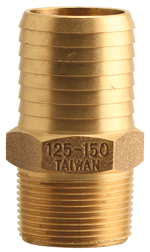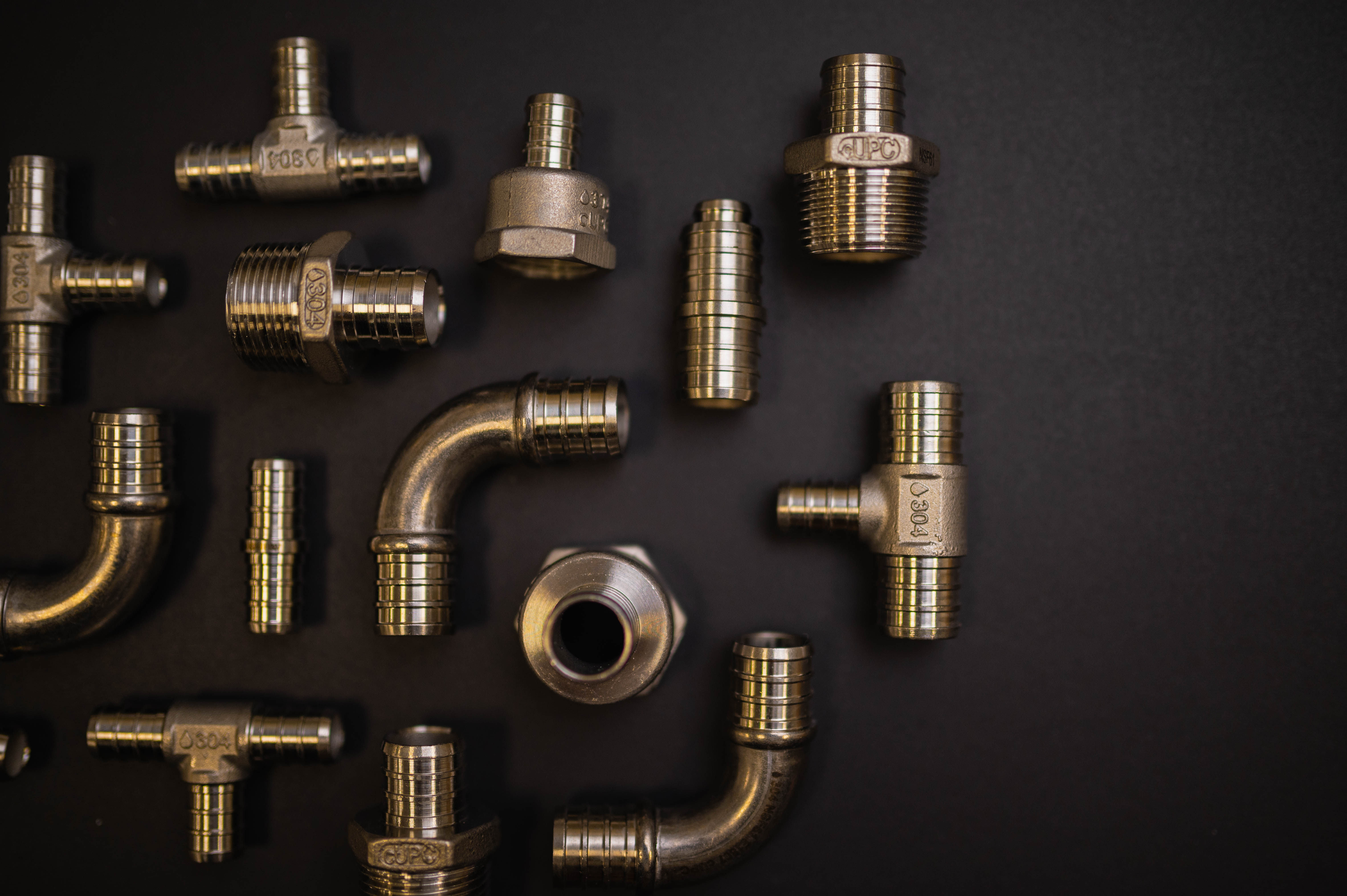The concept of insert fittings is in no way a new concept. However, there are different things that you can look for when selecting a Bronze insert fitting that will ensure they install easily, last longer and hold up to more pressure.
In this blog, we are going to go over the following features and explain why they are beneficial.
- Lead Barb
- Wall Thickness
- Smooth Inside
- Sharp Serrations
1. Lead Barb
Lead in this case is not referring to the material. The lead barb is the first barb that goes into the pipe, like a leader. The smaller the diameter of this barb the easier the fitting will be to insert into the pipe. Generally, the pipe can be heated in hot/boiling water to expand the end and insert the fitting. That being said, some fittings have a more flat end ahead of the lead barb which makes them harder to insert and requires the hose to be heated.
When selecting an insert fitting look for a rounded lead barb to make it easier to insert into the pipe. An insert fitting with a tapered lead barb reduces the diameter of the fitting at the end to smaller than the inside pipe diameter. You can see an example of a smooth lead barb in the picture.
2. Sharp Serrations
The purpose of a barb is quite simple, allow the poly pipe to easily slide on but harder to remove. The sharpness of the barbs can determine how well it will hold up with pressure is applied. Sharp barbs provide excellent blow-off protection. When a clamp is added, the sharp barbs bite into the pipe securing the connection. This provides excellent blow off protection from system pressure.
3. Consistent Wall Thickness
Some insert fittings have inconsistencies in the thickness of fitting walls. This is caused by mold shifting during the manufacturing process. If the mold shifts, more material ends up on one side leaving the other side with a thinner, weaker wall. Insert fittings with thicker, consistent walls, will last longer as they are stronger and more heavy duty.
The internal part of the insert fitting is just as important as the outside. A consistent wall thickness along with a heavy duty construction ensures the fitting will last longer. This is not something that is easy to identify by weight or looks.
Boshart Industries is committed to quality assurance and ensures that insert fittings have a consistent wall thickness.
4. Smooth Inside
Similar to the consistent wall thickness point, this one is not always evident at first glance. An insert fitting that is machined internally will provide a smoother flow through it. The process of machining the fitting is removing a thin layer of material, providing a smoother more even surface. The smoother area reduces turbulence and friction loss as water flows through the fitting.
In Summary:
Some of these features are easier to identify visually than others. The combination of all four of these features ensures you have an excellent insert fitting that will install easily, last longer and hold up to more pressure.
Have further questions about this subject?

Head over to Boshart's Knowledge Base: technical product information, guidelines, and more.

![[Video] 4 Features to Look for in Bronze Insert Fittings](https://blog.boshart.com/hubfs/Bronze%20Insert.jpg)
.png)

SHARE